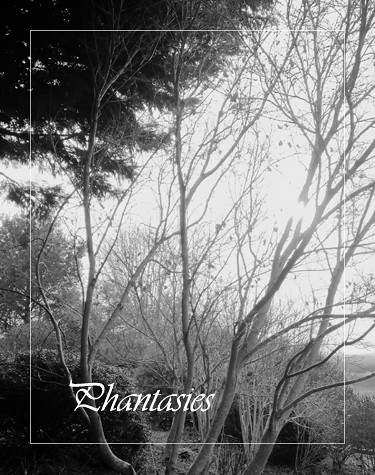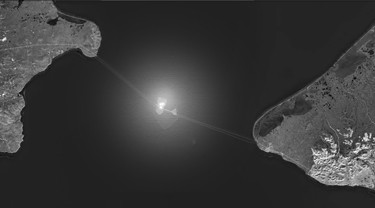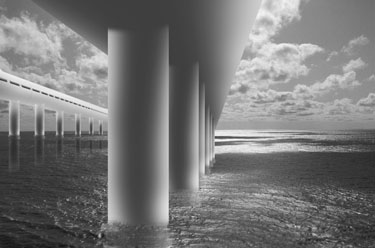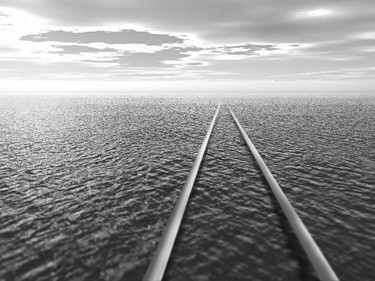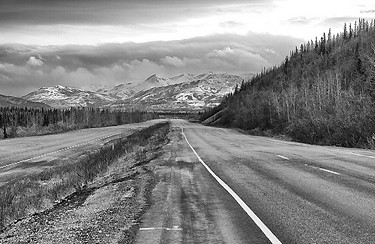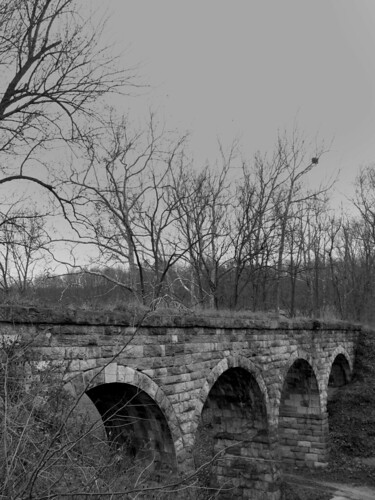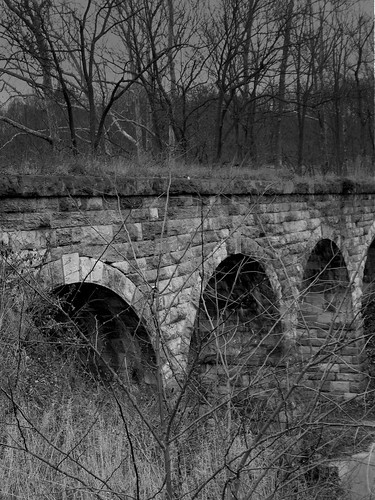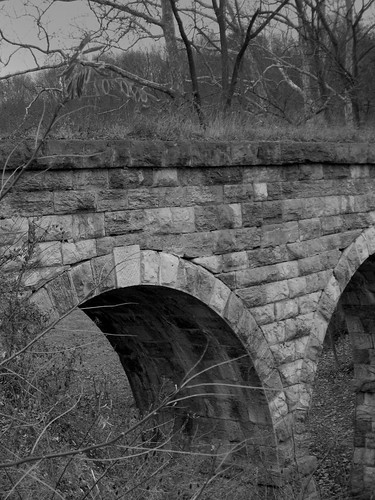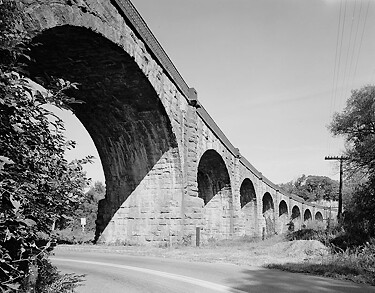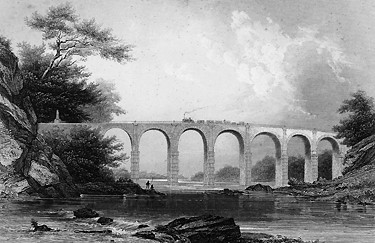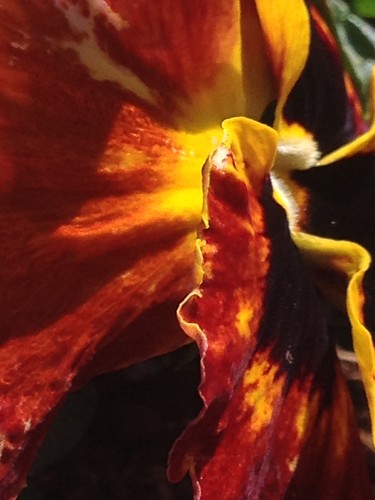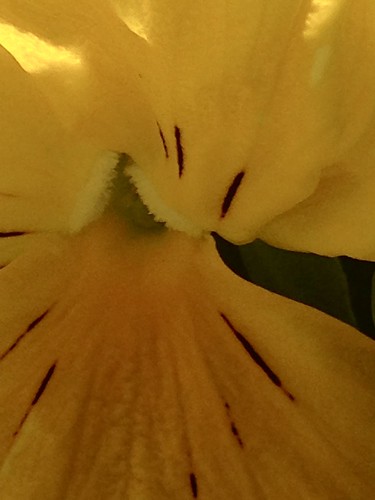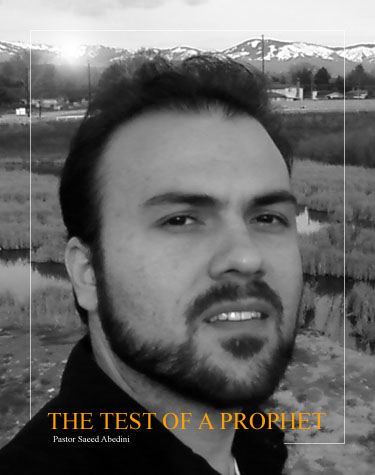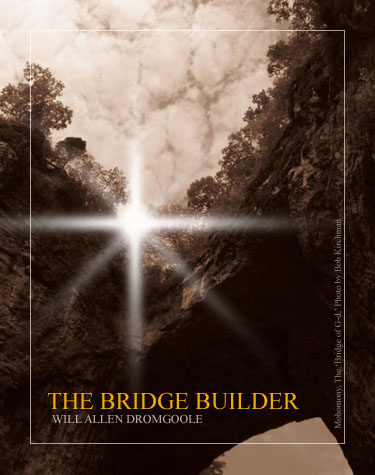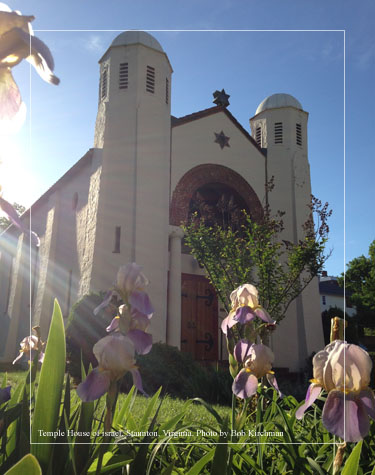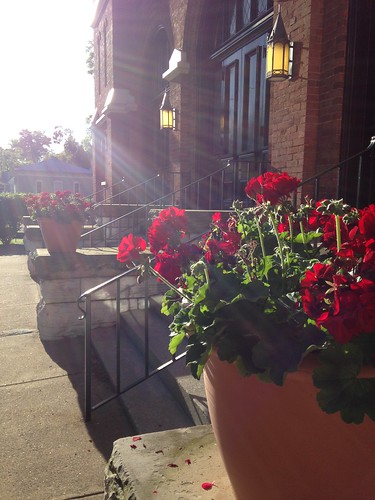
Volume XIX, Issue XVI: PONTIFUS, Fifth Anniversary Edition
The History of Serial Fiction
Serials have existed in fiction for a very long time. Books were expensive back in the 19th century, so they were printed in installments in order to keep the price low. Charles Dickens, often heralded as one of the greatest early self-publishers, was also one of the most successful writers of serialized fiction. Another big name, Alexandre Dumas, was a very prolific serial novelist, publishing both The Count of Monte Cristo and The Three Musketeers in serial format. In fact, serialization worked so well, it was considered the way to go by popular authors during the time." -- Samantha Warren
THYME Magazine presents, in serial form, the story of a man who challenged the proposition that something he wanted to achieve was "impossible." Based on history, depicted in the future, Pontifus is a tale of human triumph in the face of challenges such as face us today.
Pontifus, the Bridge Builder's Tale
By Bob Kirchman
Copyright © 2015, The Kirchman Studio, all rights reserved
I think over again my small adventures.
My Fears,
Those small ones that seemed so big,
For all the vital things I had to get and to reach,
And yet there is only one great thing,
The only thing,
To live to see the great day that dawns,
And the light that fills the world."
--Old Inuit Song
Rupert Zimmerman was uncomfortable, to say the least, with the moniker. Perhaps his most trusted assistant and daughter, Elizabeth had struck a nerve. She and her husband Martin were the only ones in on it anyway, but it was an effective device when the old man held the reins too tightly in the conduct of a meeting. To be fair, she used it only on rare occasions and it must be noted that Elizabeth Zimmerman O'Malley was indeed a compassionate and thoughtful daughter. The old man, like so many who struggle hard before their great work bears fruit, tended to grip things too tightly. The Latin term was actually an apt description of Zimmerman, for it was 'Pontifus,' which simply means; "Bridge Builder." The more used, and more familiar usage of the term refers in no uncertain terms to the Bishop of Rome. Thus a double entendre became a useful tool to the younger Zimmerman. She used it softly and sparingly as a means to help her Father step back into the humility he himself felt more comfortable in.
Mankind has always sought to open up a way to points unreached. First he wore paths to new hunting places. Gradually the paths became highways as trade ensued. Fords and ferries connected the paths across streams and rivers. The building of bridges stretched both the limits of human creativity and the materials employed. Simple logs and planks were laid across streams. Masons crafted stone arches that bridged rivers. Steel beams and cable were spun in the most amazing forms to bridge the largest bodies of water. John A. Roebling's Brooklyn Bridge, completed in 1883, came to symbolize the high art of bridge building. High gothic towers supported an elegant array of cables and stays that gracefully carried the roadway and a pedestrian promenade across the great East River. Throughout the centuries that followed, longer spans connected ever greater distances. But there were a few challenges that remained in the realm of imagination. They remained there, mostly because of geopolitical constraints, but psychological barriers as well. In fact, it was the consensus that something was "impossible" that often stood in the way of the attempt. Rupert Zimmerman would tell you that his earlier projects, far less ambitious than his latest, had almost all defied insurmountable odds. Yet they had been built! Driven to what many considered the end of the world by forces beyond his control, he found a way to go further.
Dedication:
This little book is dedicated to those brave young people, who though I shall not name them here, will likely recognize bits of themselves in the characters I portray. I apologize beforehand for this intrusion into your privacy but feel that the world so desperately needs your story. Your very real dedication and bravery inspired this book and it cannot be written without a foundation of such truth. Most of all it is dedicated to my beautiful wife, of whom the accolade: "Well done, good and faithful servant!" is most fitting. You have stood by me in good times and bad. We have shared in the raising of some incredible young people who inhabited our own home. You have poured your love and wonder into the lives of countless students. I love you with all my being!!!
It is because we both love young people so that I write this. It is but a poor attempt to offer hope and direction to a world so devoid of it. We err, perhaps, in pointing to the hope of the hereafter without providing adequate models and renderings of that Kingdom and those who have labored to bring it into the world we inhabit now. The water that will quench the soul's thirst is dismissed because those who profess to bear it often seem, (to the society around them,) preoccupied with apocalyptic visions and derision for the world as it is now. It is not wrong to love such things, but they are not easily shared with those for whom the flower of life is yet to come. No bride-to-be, having just unwrapped her wedding planner, wants to engage in a lengthy discourse on Eschatology!
Jeremiah of old told those in exile to "Build, Plant, Marry and Have Children, Prosper and Pray!" -- and to be sure, there are many who do. They just don't make the headlines very often. The historical references in this work, and there are probably too many, are essential to understanding how men and women have navigated dangerous times before. They are most necessary to show how one can indeed have vision for one's own times and hope in a greater, unseen reality as well.

Book One: Dinner Stop at the End of the World
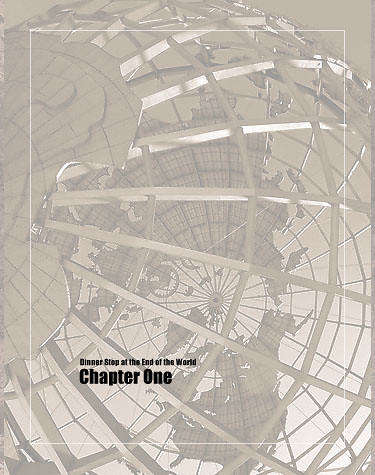
OH, East is East, and West is West, and never the twain shall meet, Till Earth and Sky stand presently at God's great Judgment Seat; But there is neither East nor West, Border, nor Breed, nor Birth, When two strong men stand face to face, tho' they come from the ends of the earth!" - Rudyard Kipling
The morning sun played upon the flowery tundra of Cape Mountain and Kingigin, the high bluff above Wales Alaska. An arctic fox surveyed the scene as the light played vividly on the Bering Strait. For the years of the Cold War, Soviet and U.S. submarines stalked each other silently beneath the icy waters while fighter jets challenged one another in the airspace above. The Soviets operated a radar station on Big Doiomede Island in the strait. The U.S. Air Force surveyed the scene from an outpost near Wales. Next to the village itself, the U.S. Navy operated a submarine research facility. The hostile environment seemed an appropriate stage for a face-off between the world’s two superpowers.
Captain James Cook named it Cape Prince of Wales in 1778. The Inuit knew it as Kingigin, or 'the high bluff,' and called themselves Kingikmiut, 'people of the high place.' Their ancestors walked into America, it is said, on a bridge of land that once connected Asia to Alaska. Now the icy strait separates the two continents, and as the sun rises on the tip of Alaska, it illuminates tomorrow dawning across the International Date Line. Sunlight gleams upon two thin lines of commerce stretched across the vast strait. The twin spans of the Bering Strait Bridge, completed in 2020, once again connect Asia solidly to America. As morning breaks over the vast landscape, the first trucks begin to roll across the slender spans, carrying the commerce of the world.
Joe fumed inwardly as his rig made its way up the mountainside approaching Wales. He and Chris were in the queue for tonight's hazmat session. The young turk was hauling fertilizer to Siberia from Canada and had missed last night's hazmat hours. Chris and Joe had helped him change a tire that had blown on the merciless road and now he was one of their company. Protocol set him at the front of the convoy, since he was a holdover from last night's roster. Chris, as a senior driver, fell in behind. Joe brought up the rear. "Slow hazmat night;" Chris radioed, "I'm squarely in the 'rocking chair." Joe mumbled: "I hope Abdul does OK with the 'Twenty Questions." He referred to the likely interrogation the man from 'Marlboro Country' faced at the hands of the BSBS personnel who worked security for the span because he'd drawn the hand of hauling a hazmat load. Abdul seemed likeable enough, and had told them about how Turkish customs officials loved to receive cartons of a certain American cigarette in exchange for speedier processing at the border. Still, the retired Israeli Defense Forces personnel contracted to run security on the twin span would likely take some time to get to know him themselves.
Summertime brought a joyful display of color to the arctic hillside. Joe hoped sometime he'd have the opportunity to walk on that landscape, but tonight he just hoped for a rest stop that would time itself so he could SKYPE his granddaughter. 'Kate' as she now proclaimed herself, was in high school now. The child he had had the leisure to watch grow up was quite a wonder now. She would talk about her latest creative endeavor or her latest soccer match with such passion that it seemed to wash the old man with the fountain of youth. These were the men who moved the Bering Strait freight. Younger men stayed for a time, but grew restless. Patient older men and women, for whom time probably moved quicker, made up the bulk of BSB drivers. Most of them seemed to have left their careers in the 'lower 48' prematurely. Castoffs of a struggling economy, they had come to the end of the world to finish their working life making salaries that would make executives jealous. The hours were long, the roads often dangerous, but you had plenty of time to think.
Joe's mind wandered to Willa, a slender brunette with the spirit of a willow tree. She was the love of Joe's life, but life itself had lost much of its flavor in the past few years. Joe had married her in a time when optimism was plentiful and the future had seemed far brighter. He had struggled as a small businessman but their home had been happy. When America seemed to have lost its pioneer spirit and slumped into its economic doldrums, their life together had become tense. Their children had found their own paths in life and Joe found odd jobs to work at, often living in a cheap motel with his colleagues as he worked as a technician in some faraway city. His 'take home pay' often barely covered the health insurance. United States President Barry Soetoro had promised 'free' benefits for all but had only succeeded in making things more expensive. The housing industry, in which Joe had worked, was in shambles. Joe longed to go to Alaska, where opportunity seemed to still reside. Willa resisted. In the end an advertisement for "men willing to endure long hours, dangerous conditions and enjoy huge paychecks" was more than he could resist. A company called Intercontinental Logistics was looking for what they called "Mature Drivers" for the Bering Strait Highway. There was a signing bonus and they trained you. Willa had been devastated, to say the least, when Joe announced that he was headed for the land of the midnight sun. Her dream of happy family dashed by hard economics, she composed herself and tried to win her husband's heart to stay with her in the 'lower 48.' The money didn't matter that much to her. If ever there was a woman who supported her man in crisis, it would have to be Willa. "You are so much more than your career!" she opined. "Look at the lives you have touched..." Indeed their home had been a place where many had flourished in Willa's nurturing love. Joe ached for her sweet presence now, as she did for his! Still, in the end, his faithfulness in sending most of his paycheck to her was a better option than eating up their limited resources. She wished for a simple happy life with friends in their small Virginia community... but the harsh reality was that most of her soul-mates were alone too... their husbands were off working in Alaska!
In the 1950's the Eisenhower Interstate and Defense Highway System was initially planned to include Alaska roads. The designations A1, A2, A3 and A4 were given to Alaska highways and a road was even proposed from Fairbanks to Nome. That road was not built until Rupert Zimmerman needed it and the Interstate designations remained unsigned as traffic, mostly INTRASTATE, did not warrant the necessary upgrades. Now the Alaska Republic was busily widening these arteries and posting Interstate shields to signify their new importance. The opening of the Bering Strait Bridge had ushered in a new age of INTERCONTINENTAL highways. [1.] Like the transcontinental railroads of old, they required men. Good men and lots of them were required to turn the wheels of commerce.
All Trucks Must Enter Scanner" blared an electric sign ahead. Joe and Chris knew the drill. Maintaining a 25 mph speed through the scanner, then a mandatory sampling of the low-temperature liquid adhesive in their tankers, a few questions from the BSBS agents and then they'd be "in the corridor." They would be escorted through the cleared Bering Strait Bridge during the wee hours of the morning. They would be allowed a stop for refreshment at one of the service plazas on the Diomede Islands, but other than that they must keep on moving. The unknown card in their hand tonight was the addition of the Turk to their group. If he was sent to the impound lot, Joe and Chris would roll on. but a delay and further checking could put the whole convoy in a later window. As far as the money, you won some and you lost some, but as they approached Thursday morning, a well timed call would catch Kate at home on Wednesday afternoon. That was Joe's plan anyway. Dinner, he told Chris, should be on one of the Diomedes.

Maintenance operations on the Bering Strait Bridge.
Graphic by Bob Kirchman
Chris, Joe knew, would want to hold out for Big Diomede, on the Russian side of the International Dateline in the Siberian Autonomous Republic. He smiled thinking of the likely reason. Her name was Kris. She was one of the hostesses at the Big Diomede Travel Plaza and the two drivers enjoyed her spunk. Chris noticed her name tag at the moment she read the name on his shirt, beginning an ongoing conversation. Her green eyes seemed familiar with worlds unseen. Joe suspected she was writing a novel behind that hostess stand. Probably something full of wizards and worlds with more than one sun. It was the kind of thing he loved to listen to in the cab on audio books. Joe had known Chris from his younger days. They had found each other again on the Bering Strait Highway. Joe driven by the throws of economy and a failing business, Chris from his restless soul. Chris had retreated from the vibrant faith that had characterized his younger life. A series of disappointments in life had driven him to question his questions. He'd studied theology for a time, but now avoided discussion of things unseen... ...except that Joe noted, an exceptional individual could, it seemed, 'see' that dimension so well that even Chris would let down his guard. Someone like Kris seemed capable of painting a picture of that realm in vivid colors. Joe, who's faith seemed to sustain him longed for Chris to know something of the same peace. It would, Joe mused, require an exceptional guide.
Chris' softening at the thought of such an encounter, however brief, was encouraging. Though the senior driver never allowed such conversations to become personal, he did seem to be allowing them with greater regularity. "Didn't C. S. Lewis once say something to the effect that if you could imagine something wonderful, it was very likely that there existed the possibility for its fulfillment, or something like that?" Indeed, here was a conundrum. If one limited oneself to considering the seen world, there were many unfulfilled dreams… many labors lost... much observed futility! But, on the other hand, if there was more to life than life itself, dreams could be fulfilled in worlds now unknown. Healing and restoration might just be the substance of such places. The junior driver was betting his life on it. The senior driver might just see the possibilities.
(to be continued). [click to read]

Map of Alaska's new intercontinental highway.
Graphic by Bob Kirchman
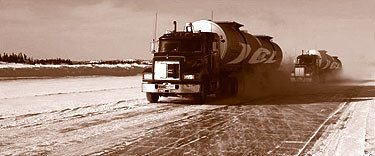
The Intercontinental Logistics Liquid Transporters driven by Chris and Joe.
[click to read ]
The World of PONTIFUS
The World of PONTIFUS
[click to read]
Set, not in the far distant future or past, PONTIFUS actually was written about the part of the Twenty-first Century that we live in. The technology is not so much new and exotic. The story actually takes place after the opening of the Bering Strait Bridge – on November 15th, 2020! When the story was written I merely projected six or seven years into the future because the ability to build such things already exists. I did then see that one day there might be a need for the freedom-loving peoples of the world to perhaps find a ‘new land’ for their ideas to take root in. What would that look like? How might it happen? Sir Winston Churchill, after evacuating the British army from Dunkirk with civilian boats, talked of never giving up. But it is suspected that he envisioned the noble qualities of English civilization continuing in exile in Canada or Australia as Europe was overrun by the National Socialists, hence my reference to Jeremiah 29. PONTIFUS, in this respect, is a story that is not so much dystopian as it is a story of hope – the hope that great ideas DO endure – and that they will influence future generations! (read more)

